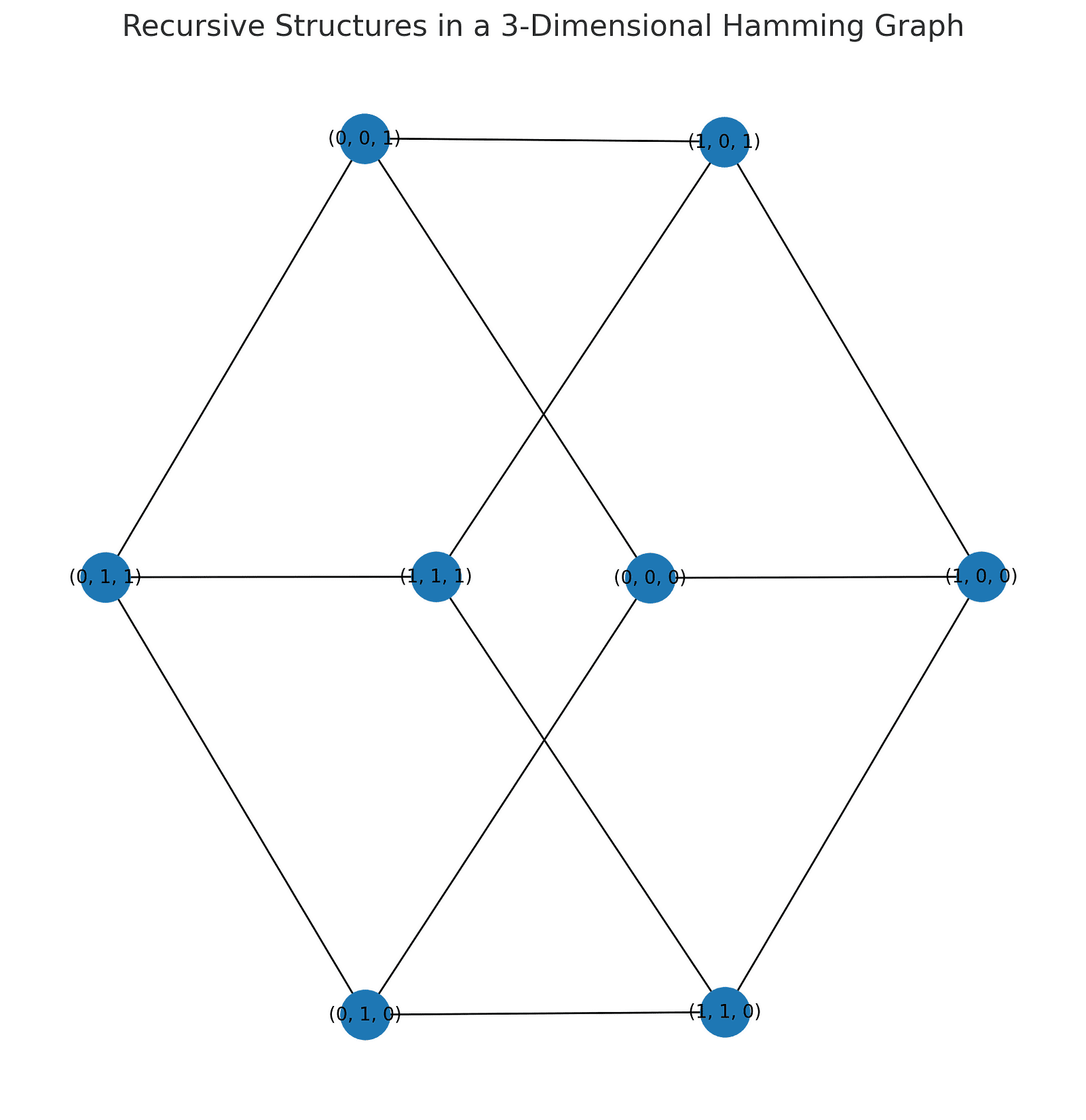
Beneath the familiar contours of everyday communication lies a hidden architecture, one rooted in mathematics and logic. Enter the Hamming graph — a conceptual lattice where every node represents a possibility and every edge, a connection. In this matrix of infinite combinations, researchers uncover the extraordinary: completely regular (CR) codes that redefine the boundaries of efficiency and accuracy. These codes, found in specific Cayley graphs, extend into Hamming graphs like ivy climbing the unseen trellises of a gothic cathedral, revealing patterns previously thought impossible.
But why does this matter? CR codes are not just mathematical curiosities; they represent new ways to organize information with unparalleled precision. Whether ensuring error-free communication in deep-space exploration or securing financial transactions, the implications ripple through critical industries. This level of innovation emerges from meticulous study, linking symmetry and logic in elegant yet unexpected ways.
Beyond the Boundaries of the Known
Why are these discoveries revolutionary? Start with covering radius, the subtle measure of how far any point in a graph is from its closest beacon of certainty. The researchers have charted new CR codes — most intriguingly, independent sets that function as optimal orthogonal arrays. They are the mathematical equivalent of finding a thread that doesn’t just lead out of the labyrinth but rewrites the labyrinth itself. Recursive construction ensures these codes propagate endlessly, like ripples across a pond, introducing symmetry and order into previously chaotic spaces.
Consider this: previous CR code discoveries worked within strict parameters, often constrained by linearity. The latest findings, however, break free. By working in nonbinary fields such as GF(3), they reveal new forms of independence that scale into infinite dimensions. These aren’t just theoretical triumphs — they’re tools, refined for practical applications.
And there’s a human element here, too. Research like this reflects a kind of mathematical adventurism, where pushing boundaries isn’t about breaking rules but rewriting them in ways that open new doors for discovery and utility alike.
A Framework of Discovery
Here’s where it gets even more dazzling: this is not just a triumph of abstraction but a framework with real-world implications. Each discovery in a Hamming graph translates into tools for error correction, data compression, and secure communications. Imagine a world where every message transmitted — be it across the internet or deep space — carries the reliability of these CR codes. The researchers’ catalog of intersection arrays and recursive expansions is as much a guidebook for future explorations as it is a map of what’s already possible.
To better understand the recursive elegance of Hamming graphs, the following visualization illustrates a 3-dimensional structure, showcasing the interconnected nodes and their relationships.

For example, the newfound CR codes offer efficiency gains by optimizing data transmission pathways. This matters in everything from 5G networks to satellite systems, where data loss or corruption is costly. Moreover, the intersection of graph theory and coding theory provides unexpected insights for machine learning, where mapping relationships between vast datasets mirrors the logic of Hamming graphs.
What’s particularly striking is the way these CR codes help refine our understanding of network robustness. They serve as blueprints for designing systems that withstand disruption, offering new perspectives for cybersecurity and quantum encryption — a field where traditional logic often falters.
Threads in the Graph: Highlights
- New CR Codes: Discoveries include the unprecedented {21, 4; 2, 21} parameters, expanding the universe of what’s possible in coding theory.
- Infinite Sequences: Recursive methods enable CR codes to scale into higher dimensions, creating an endless tapestry of applicability.
- Interdisciplinary Links: These graphs mirror phenomena in fields such as quantum physics and artificial intelligence, where complex systems rely on underlying order.
- Practical Strength: Independent sets translate into the best orthogonal arrays for error minimization, an essential feature in real-time applications.
- Graph Symmetries: Cayley and Hamming graphs enrich each other, providing new lenses to approach network design and optimization.
The Bridge to the Future
In the realm of mathematics, breakthroughs often feel esoteric, tucked away in journals read by a select few. But the implications of this work stretch far beyond academia. The recursive beauty of CR codes isn’t just about solving equations; it’s about solving problems. They lay the foundation for more reliable technologies, from the digital highways we traverse daily to the encrypted vaults safeguarding our most sensitive data.
There’s a certain poetry to this, isn’t there? The interplay of precision and creativity, logic and exploration, reminds us that the tools of tomorrow begin as whispers in the equations of today. Hamming graphs and CR codes aren’t just reshaping how we think about data; they’re reshaping how we think about the future itself.
About Disruptive Concepts
Welcome to @Disruptive Concepts — your crystal ball into the future of technology. 🚀 Subscribe for new insight videos every Saturday!
See us on https://twitter.com/DisruptConcept
Read us on https://medium.com/@disruptiveconcepts
Enjoy us at https://disruptive-concepts.com
Whitepapers for you at: https://disruptiveconcepts.gumroad.com/l/emjml







